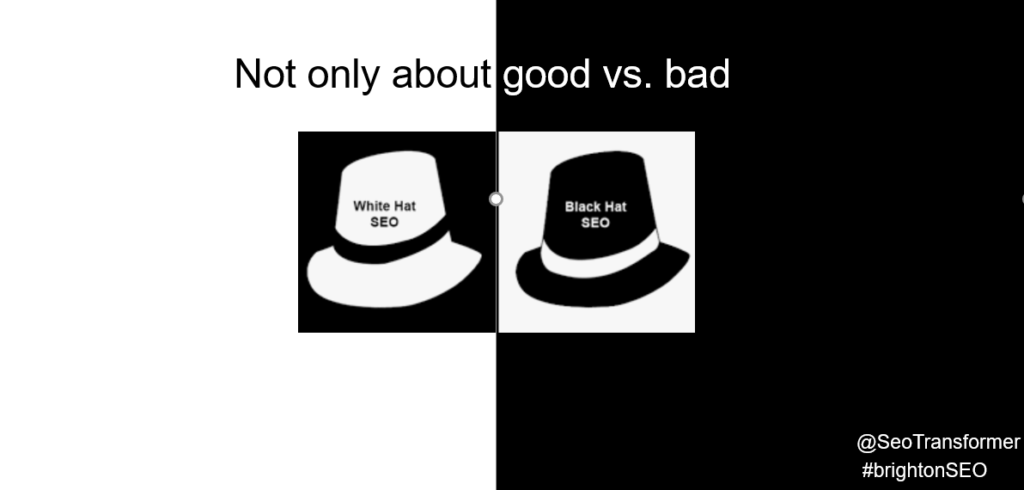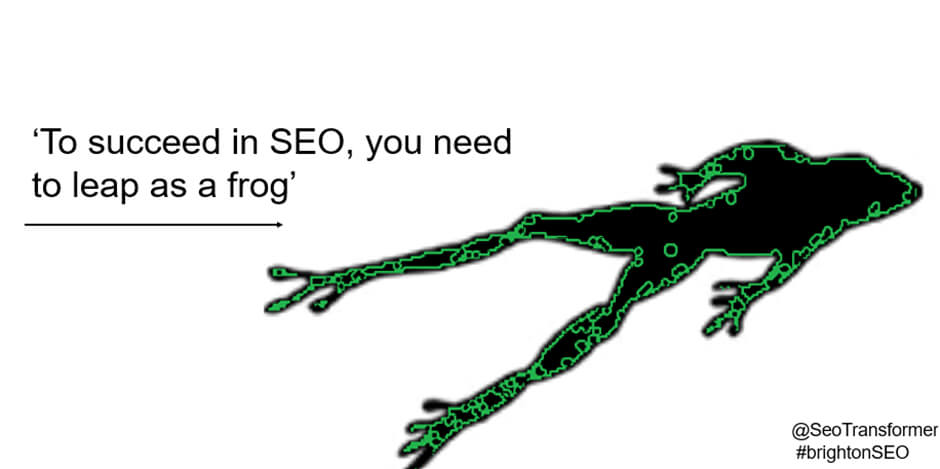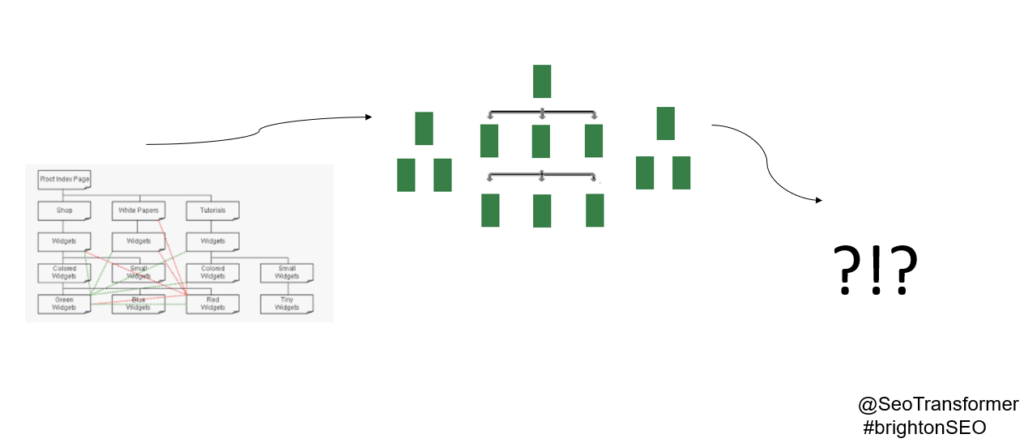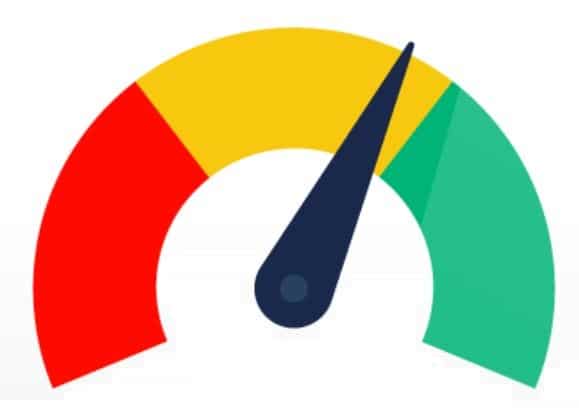Here I share the topics I covered during my session about the SEO process challenges and wins during the BrightonSEO conference in April 2022, which hosted more than 3000 SEO, digital marketing, and web development experts and enthusiasts. I had the honor of having John Muller, Google’s Search Advocate attending my first in-person conference speech.
In brief, my session was about the learnings and insights about managing the SEO process from the various SEO projects I managed for B2B and B2C businesses; whether for e-commerce, educational, finance, legal, sports, home, beauty, medical, SAAS, UN organizations, government websites and more. For those who do not know me, my name is Nadia Mojahed, I am SEO Consultant based in Geneva, Switzerland running my own digital and web development agency after having been in digital marketing for more than 15 years in the Middle East, Europe and US regions.
Hope you get the most out of the SEO techniques and approach I will be sharing with you! The presentation PDF is provided at the end of the page for download.
Overview – SEO process challenges & wins
To manage the SEO process effectively, you need to be aware of the common SEO challenges and wins that not only SEO Consultants and professionals but also the best SEO companies face, covering the various SEO process along the way. Common issues concern:
- Approach to SEO strategy; how to plan an effective SEO strategy
- Technical SEO priorities & fixes; how to handle technical SEO audits
- The SEO project management;
- Quality assurance,
- Organic search conversions,
- Essential SEO elements,
- SEO news, tools & updates; keep your optimization techniques up-to-date while focusing on the important.
Approach to SEO strategy

First and foremost, the approach to SEO strategy many SEO agencies and professionals have is that they start the process with a competitor keyword research using keyword research tools, select search queries based on monthly search volume and competitive analysis, and create relevant content to get a good search engine ranking for those keywords. There is no harm in this approach, yet it is a difficult and risky route because it is based on an existing market and makes it more competitive.
While if you base your SEO strategy on customer research, particularly customers’ needs and patterns, and match them with your products and services, then look for keyword phrases and write your high-quality content accordingly, you will have a better return on investment.
SEO strategy and the competition
In their book Blue ocean strategy, Chan Kim & Renée Mauborgne presented a new creative approach to marketing.
A red ocean is where companies compete in a defined market with pricing, offering, and experience. On the contrary, the blue ocean is where companies serve a new market, and a new demand exists.
With the red ocean strategy, the market gets more crowded, the competition gets fierce and profits decline for all players. With the blue ocean strategy, companies find new opportunities and dominate the market for a long.
Consider for example how Tripadvisor created the need for travel reviews, uber for rideshare, and Airbnb for home-sharing among many others. They dominate the market and searches pages for their respective keywords even though other companies try to compete with them.
Apply a user-centric SEO approach
To apply the blue ocean approach to your SEO strategy start your SEO process with customer research and do the keyword analysis work post publishing the content. Say a couple of months, you can revisit the content and see their performance. We often find creative new keyword ideas, keywords that drive qualified organic traffic with search volumes that allegedly didn’t exist but really do.
The challenge here is that you might be afraid yourself of such as strategy. You might find resistance from your clients or management to target Keywords with little to no search volumes. But Remember two things:
- 1. How many websites have many ranking keywords that drive organic search traffic to the website but few sales?
2. Competition can change, SERPs are always changing, and what is fixed is your business’s unique added value to your users. It is important to build your strategy on a constant element and not a variable.
This is especially risky for businesses built on digital products such as SAAS. where it can be easy for users to shift from one product to another. Forget about competition keywords and let the users be the backbone of your SEO strategy.
User-based SEO activities, techniques, and tools
Here are some quick tools that will help you with your SEO user-based approach:
- Prioritize being useful to users and answer common customer questions over keyword search volume. Don’t hesitate to target KWs with little to Zero search volumes.
- Integrate storytelling into your copy. This will help you with conversions.
- Read customer reviews, what issues and service aspects are they addressing
- Use search suggestions, whether, for organic or Google ads, Google autocomplete function to find out relevant keywords and topics
- Invest a portion of your time in reading and interacting with online communities such as Facebook and Reddit for example, you will discover a lot about your users and the real search intent behind keywords they use
- Check out complimentary services. You will find amazing topics you can address on your website useful to users
- FAQ pages.
- Internal data sources such as Sales & Customer service, or brand teams who are running customer surveys to get more data on user patterns that you could target
Technical SEO approach —Technical audits & SEO fixes

The approach many SEO professionals have to technical SEO audits is that as a good SEO you need to have great website scores, apply best practices and fix all issues. They view SEO in terms of white hat vs black-hat techniques. It is always a must to apply Whitehat SEO practices; however, to be a good SEO, you need to know which bad scores you need to accept, which issues you need to refrain from fixing, and which ones you invest your efforts on.
SEO tools will give you a complete list of issues and fix recommendations; many of them will be irrelevant to your website. It is your responsibility to find the items that make sense to your website.
This will require experience, not only in Search Engine Optimization but also in the specific project you have at hand and the tactics it takes to drive organic traffic to it.
Technical SEO audits that drive results
So, it’s not scoring that you need to focus on. It is the overall business strategy, that can drive results and bring a return on investment for the given situation at hand. Unlike the SEO content strategy, for technical SEO elements, you need to bring competition into perspective from an early stage. Because It’s more about you against your competition’s performance in your specific industry in light of the business priorities.

So how can you prioritize and what bad scores to accept? Here are a few examples to think of.
- The tools will tell you to reduce the size of all images that are above 100KB. In practice, this will not be a realistic image score goal for many websites.
For example, for an eCommerce site, you need high-quality images. You might even need 360 images. Trying to score will hurt your branding. 300KB or even more might be a good target for balancing your brand and page speed.
- The best practice for page speed is to have a score above 80. But if the average page speed is 20% in your market, why not aim for twice better performance and focus on producing quality content for example?
- Improving core web vitals might make your website look bad. You might need to improve your scores if you need to compete in specific industries but not a one-standard recipe for all.
SEO Scores Are Just The Start

So it is not bout scores it is about the business situation at hand. Once you get hold of all technical issues, you need to wear the different business hats and ask how each fix would help the business KPIs from that respective angle. Double-check the competition performance to define your goals.
Aligning with the business goals means:
- Prioritize initiatives that help the company’s strategy
- Try to find alternative ways to achieve the same results that better suit the business
- Position the things you want to do as supporting company strategy
- Communicate issues using the business language
Practical examples of effective SEO communication:
- – Instead of communicating that we need x amount of words per page for those KWs, you can show the performance of the good performing pages with that word length
- Instead of saying ‘We should improve the page speed to optimize the organic ranking, you can say “User surveys show users are frustrated with how slow our site is“,
- “The top customer’s request is to add this feature to product pages“,
- Or “this change will remove a legacy tech code that consumes engineers’ time to maintain“,
- “By focusing on this critical keyword list we will outperform competitors X and Y in terms of digital footprint“
Managing the SEO process

On one hand, managing an SEO project is complex; there are many variables, ranking factors, and situations that remain ambiguous even in their clearest form. There are so many steps and elements but not one single thing to do.
On the other hand, you need to make the right decision at the right time, take incremental steps towards achieving the goals and make the unclear things clear to others.
It is not going to be easy at the beginning (not that it will be going further but that’s the beauty of it), but the difference is that you will be more confident at it and you will have more experience to handle the different situations.
Quality assurance
To manage a successful SEO process, one of the most important elements is to have quality assurance in place. Starting things are easy; finishing things is hard. Therefore make sure that you check if the issues have been fixed and how correctly.
I saw many cases where fixes have been planned but not implemented, started but never finished, or implemented but then abandoned because of project complications without cleaning the code afterwards.
Proactive steps to improve quality assurance
- Have the digital plan and KPIs discussed and understood by all key stakeholders. You need to ensure that they clearly understand and agree on the mission, not only know it. Let them articulate it in their own words
- Don’t forget to track progress as a KPI. Implementing an SEO change should be considered a KPI to help make SEO a priority for the team
- Educate your staff, not only your SEO personnel. The digital marketing team, web developers, and all content stakeholders should know how things work to avoid simple mistakes and save the time of rounds of iterations and re-doing pages
- Have an SEO intervention blue chart circulated between all stakeholders so that all know when they need to ask for an SEO check or intervention, so no SEO step can pass unnoticed or unchecked.
Organic search traffic conversions

Checking organic conversions belong to Quality Assurance. We SEOs care about elements that affect conversions such as
- Quality and compelling content
- UX design
- A/B tests
- Working forms and contact methods
- And other elements.
Yet many miss TESTING THE ORGANIC LEAD HANDLING PROCESS.
What I mean by that is to test the company lead response, give them a call, see how much time they take to respond.
When a lead reaches out for a service, they usually contact 2-3 service providers. They will most probably take the first responders.
I have learned this after I have worked on an SEO project and improved the organic lead generation yet the conversion to sales where suffering. I was puzzled and spent time trying to understand what was the issue. I decided to test the lead handling process. I gave the company a call and filled out a request form. It took the team 2 days to respond to my inquiry, whereas their competitors took 2 hours to respond. Once I addressed that to the management and fixed it, the organic lead to sales conversion improved.
My advice is to keep frequently testing as long as you handle the SEO project as companies change customer agents, communication tools, or others that can impact organic sales performance.
Essential SEO elements to maintain

SEOs usually start with a holistic approach and end up with an atomistic one. They look for new and advanced tactics to improve performance and forget essential elements.
For example, they spend time applying advanced meta robot tags and forget about producing more quality content.
They focus on site structure at the beginning of the project, but abandon them along the way, ending up with an unorganized website, like where they started in the first place.
Remember, essential elements will always be important. And become even more important and challenging as the website gets bigger with more content, features, and elements to handle.
Make sure to always take care of your site navigation and how information is presented to users. Enrich the page inbound links and interlinking between pages. Have a content marketing that supports existing content, and creates content pillars around your user’s needs and products or services.
SEO news, tools & updates
Not only competition is changing, but also users’ needs, search engine machines, and ranking factors. There are many SEO tools, plugins, updates, and developments out there. As SEOs, you need to maintain your practices up-to-date and keep abreast with the developments yet you need to be very careful with that.
It is easy to get consumed with implementing new things that might not be important for your SEO project, applying tactics that worked for others but won’t for you, or jumping to make changes on your website following algorithm changes without evaluating and monitoring the impact on your project.
It is good to try new SEO tools and see what technology is out there. Yet we do not need many of them. The challenge is actually to keep as few tools as possible. My advice is to keep them to less than the count of five. It is enough to have Google Search Console (GSC) and a couple of other tools, one to help you with keyword tracking and one with crawling websites.
I saw cases where SEOs ask what tools to use to figure out the page issues and forget about the most important one: the URL Inspection tool in GSC.
For example, when the Google Kit plugin was first launched, many SEOs implemented it without assessing if it was useful for their use case. Why implement a tool that slows down your website for those who are tech-savvy and can access the data at the source, whether at Google Analytics or Google Search Console?
When Google changed how they processed meta-titles last year, many went to change the headers on the pages. Was the time important to change the headers or better invested in creating new quality content to satisfy the needs of your customers?
Make sure to focus on what we know works and what brings a return on investment.
Key takeaways
- Plan your SEO strategy based on USERS and not COMPETITORS
- Align technical SEO audits with the business
- Always take hold of site structure, essential SEO elements, and quality assurance
- Wait and monitor the effects of SEO updates on your site before taking an action
- SEO process will always be complex, take the lead and leap
If you need help with your SEO project or managing the SEO process in-house, do not hesitate to reach out to me at [email protected].









